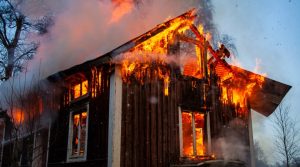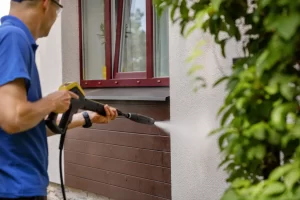The Impact of Seasonal Changes on Your Roof

Your roof is an essential part of your home, protecting you and your belongings from the elements. However, as seasons change, so does the impact on your roof. Each season has its unique challenges that can affect the condition and lifespan of your roof. In this article, we will discuss how seasonal changes can impact your roof and what you can do to maintain its integrity.
Spring
Spring brings warmer weather and often heavy rainfalls, which can have a significant impact on your roof. As snow and ice begin to melt, it can create excess moisture that can seep into cracks and crevices in your roof. This moisture can lead to water damage and even mold growth if not properly addressed. Additionally, heavy winds during spring storms can loosen shingles and cause them to blow off, leaving your roof vulnerable to further damage.
To protect your roof during spring, it’s important to regularly inspect your roof for any signs of damage or potential issues. You should also clear any debris from your gutters and downspouts to ensure proper water drainage. It’s best to consult a professional for roof washing in Duluth, GA, to safely and effectively remove any built-up dirt, algae, or other contaminants on your roof that can cause damage.
Summer
Summer brings warm weather and plenty of sunshine, making it an ideal time for outdoor activities. However, the heat and UV rays can also take a toll on your roof. The constant exposure to sunlight can cause shingles to become brittle and crack over time, leading to potential leaks. Additionally, the extreme heat can cause your roof to expand and contract, which can further weaken its structure.
To protect your roof during summer, it’s essential to keep it well-ventilated to prevent excess heat buildup. You should also regularly check for any signs of wear and tear on your shingles and have them repaired or replaced as needed. It’s also a good idea to trim any overhanging tree branches that could potentially damage your roof in a summer storm.
Fall
As the leaves change and temperatures start to drop, it’s important to prepare your roof for the colder months ahead. Fall is an excellent time to have your roof inspected for any potential issues before harsh winter weather arrives. As leaves fall onto your roof, they can trap moisture and create a breeding ground for mold and algae growth. This buildup of debris can also clog your gutters, preventing proper water drainage.
To protect your roof during fall, it’s crucial to regularly clean out your gutters and remove any debris from your roof. You should also check for any loose or damaged shingles that may need to be replaced before winter arrives. It’s also a good idea to have your roof inspected by a professional to ensure it’s prepared for the colder months ahead.
Winter
Winter brings freezing temperatures, heavy snowfalls, and strong winds, all of which can have a significant impact on your roof. The weight of snow and ice buildup can put stress on your roof’s structure, potentially causing damage or even collapse. The freeze-thaw cycle can also cause shingles to become loose and brittle, making them more susceptible to damage from high winds.
To protect your roof during winter, it’s important to clear any snow buildup regularly. You should also check for any ice dams that may be forming along the edge of your roof and have them removed promptly to prevent water from seeping into your home. It’s also a good idea to have your roof inspected after any major winter storms to check for any damage that may need to be addressed.
Conclusion
Seasonal changes can have a significant impact on the condition and lifespan of your roof. Regular maintenance and inspections throughout the year can help protect your roof from potential damage and prolong its longevity. You can read this blog to know if roof cleaning is necessary and know everything you didn’t know about cleaning your shingles so you can take the necessary steps to keep your roof in top condition all year round. Remember, prevention is key when it comes to maintaining a healthy and sturdy roof for your home.








